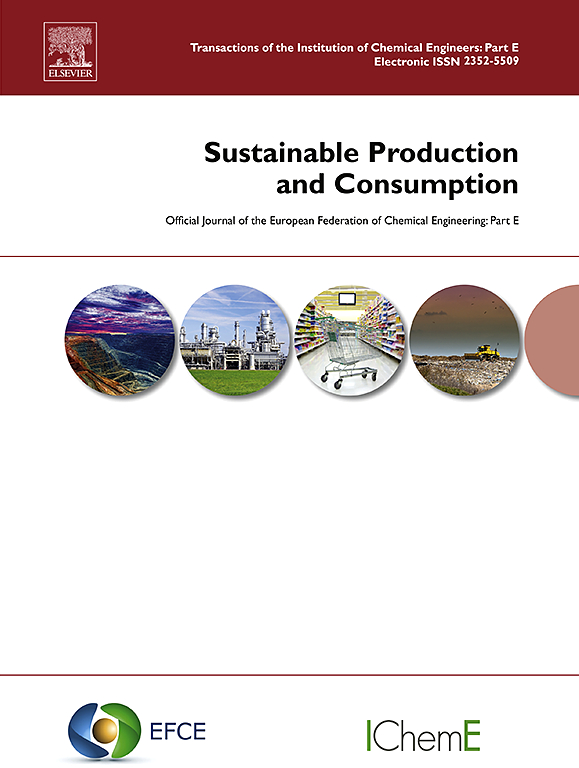Opportunities to mitigate process-related greenhouse gas emissions in global trade networks
IF 9.6
1区 环境科学与生态学
Q1 ENVIRONMENTAL STUDIES
引用次数: 0
Abstract
The reduction of greenhouse gas (GHG) emissions associated with industrial processes has garnered global attention; however, the inherently productive nature of these processes and the complexity of industrial products pose substantial challenges to identifying viable pathways for decarbonization within related industrial sectors. To enhance understanding of the links between international trade and process-related GHG emissions, this study uses a consumption perspective to improve GHG accounting and emission reduction in production and consumption, providing a comprehensive understanding of GHG emissions from industrial processes associated with global trade networks. The results indicate that the largest share of total industrial process-related embodied emissions was attributed to chemical-related processes, accounting for 34.73 %, followed by product uses as substitutes for ozone depleting substances-related (PUSODS-related) emissions at 21.96 % and cement-related emissions at 19.31 %. The chemical industry was the largest source of N2O emissions, within which the embodied emission flows within this Asia-Africa-oriented Cluster are significantly higher than those within the Europe-oriented Cluster. In the PUSODS-related process emissions network, the Americas-oriented Cluster comprises fewer economies while recording significant internal embodied emissions, reaching 34.18 Mt CO2-eq. Given the critical role of industrial processes in F-gases emissions, the United States, Canada, and Mexico have introduced fluorine legislation to restrict the import and export of PUSODS-related products, which can effectively reduce F-gases emissions. By implementing targeted emission reduction policies and fostering coordinated reductions within trade clusters, this study presents effective approaches to achieving global GHG reductions associated with industrial processes, expanding the feasibility and scope of regional emission reductions within the process-related GHG emissions in global trade network.
在全球贸易网络中减少与生产过程有关的温室气体排放的机会
减少与工业过程有关的温室气体排放已引起全球关注;然而,这些过程固有的生产性质和工业产品的复杂性对在有关工业部门内确定可行的脱碳途径构成了重大挑战。为了加强对国际贸易与过程相关温室气体排放之间联系的理解,本研究采用消费视角来改进生产和消费中的温室气体核算和减排,从而全面了解与全球贸易网络相关的工业过程的温室气体排放。结果表明,与工业过程相关的隐含排放总量中最大的份额归因于与化学相关的过程,占34.73%,其次是作为臭氧消耗物质相关(pusods相关)的替代品的产品使用,占21.96%,与水泥相关的排放占19.31%。化学工业是N2O排放的最大来源,其中以亚非为导向集群的具体排放流量显著高于以欧洲为导向集群的具体排放流量。在与pusods相关的过程排放网络中,以美洲为导向的集群包括较少的经济体,但记录了大量的内部隐含排放量,达到3418万吨二氧化碳当量。鉴于工业过程在f -气体排放中所起的关键作用,美国、加拿大和墨西哥已经制定了氟立法,以限制与pusods有关的产品的进出口,这可以有效地减少f -气体的排放。通过实施有针对性的减排政策和促进贸易集群内的协调减排,本研究提出了实现与工业过程相关的全球温室气体减排的有效途径,扩大了全球贸易网络中过程相关温室气体排放区域减排的可行性和范围。
本文章由计算机程序翻译,如有差异,请以英文原文为准。
求助全文
约1分钟内获得全文
求助全文
来源期刊

Sustainable Production and Consumption
Environmental Science-Environmental Engineering
CiteScore
17.40
自引率
7.40%
发文量
389
审稿时长
13 days
期刊介绍:
Sustainable production and consumption refers to the production and utilization of goods and services in a way that benefits society, is economically viable, and has minimal environmental impact throughout its entire lifespan. Our journal is dedicated to publishing top-notch interdisciplinary research and practical studies in this emerging field. We take a distinctive approach by examining the interplay between technology, consumption patterns, and policy to identify sustainable solutions for both production and consumption systems.
 求助内容:
求助内容: 应助结果提醒方式:
应助结果提醒方式:


